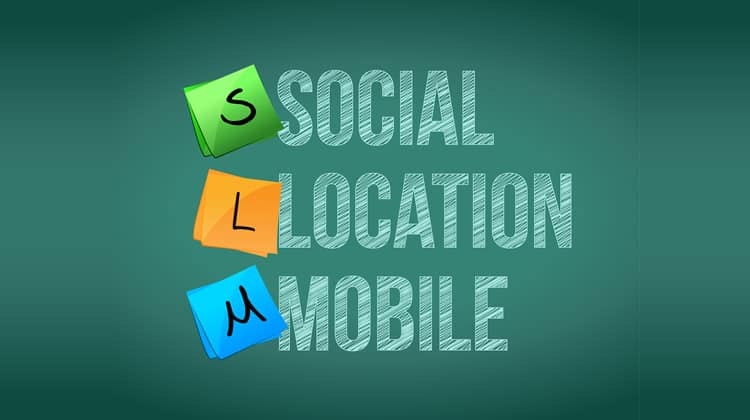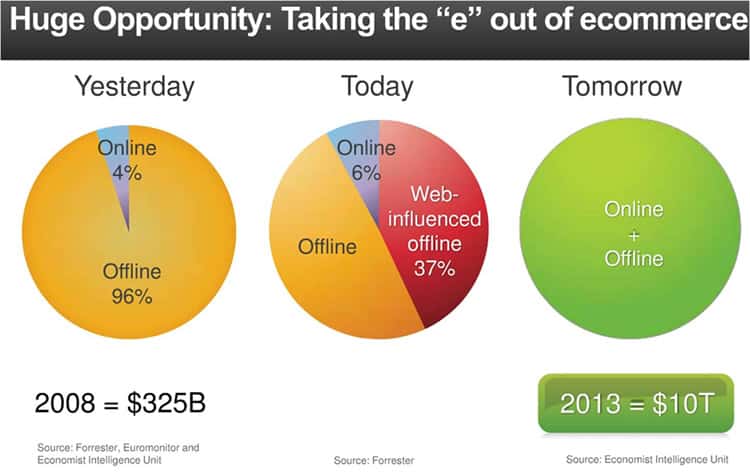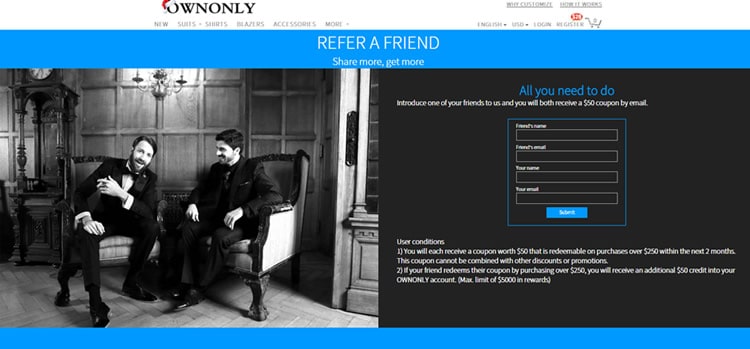
There are a myriad of ways to leverage social, mobile and location for an ecommerce website. SoLoMo has been a buzzword in the marketing world since 2012 and marrying all these three media has helped many online retail businesses grow. Many large brands such as Nike have introduced new product categories and responded to new competition using SoLoMo campaigns.
What makes SoLoMo Different from Multichannel & Omni-Channel?
Each of these terms has evolved to improve brand awareness, consumer relationships, inquiries and orders. Then what’s the difference?
The concepts of multichannel, omni-channel and SoLoMo are similar to one antoher; their approaches and benefits, however, differ.
During the early days of ecommerce, many brick-and-mortar retailers were skeptical about the future of online retailing. But when online merchants like Amazon and eBay started gaining market share and threatened to grow bigger than their offline counterparts, many of these well-established physical store chains began investing in ecommerce to boost their market reach. This gave birth to the concept of multichannel marketing.
Later around 2005, retailers started making a fresh approach to improve their customer experience, by tracking customer engagement across all available communication and marketing channels. This was the beginning of omni-channel marketing, which has now extended to include mobile and social platforms as well.

SoLoMo is comparatively a newer marketing term coined by venture capital firm Kleiner Perkins in 2010. It emphasizes the intersection opportunity created by the convergence of social networks, mobile platforms and local commerce. Just like the multi and omni-channel marketing, SoLoMo leverages multiple touch-points. But SoLoMo, unlike the other two, relies heavily on location-based technologies such as GPS, QR codes and NFC to connect all other marketing strategies via mobile devices.
The Real Importance of SoLoMo in Today’s Context
Many argue that it is probably time to stop using the acronym SoLoMo, or at least taking it literally. The concept indeed provides some significant ROI opportunities but the only issue is that marketers put too much emphasis on tactics and devices rather than focusing on the evolving behavior of consumers. The ecommerce age we live in is defined and controlled by consumer behavior. Besides, taking this acronym literally does not always serve the purpose of marketing.
What if your business lacks a physical location? What if your customers are not heavy social media users? Do you really need your customers to check in to your physical location every time they visit you or do you always need to pinpoint their exact location to gauge their intent to buy? Probably not. So, to understand the real importance of SoLoMo in today’s marketing scenario you need to decode the social behavior of today’s consumers.
The ‘So’ is no more about social media, it’s about a person
For a marketer, social media is a channel to communicate on and generate revenue from but for a lay person like you and me, it is an extension of our relationships with fellow humans and brands. There are other ways to extend these relationships as well, i.e. calling, emailing, text messages, or visiting a website. Instead of focusing on social media alone, you should take out the time to understand your customers and their relationship with your brand, and work on enhancing it.
The ‘Lo’ is more about context than just location
Rich mobile data, including location data, boosts the relevance of search results. This helps marketers take advantage of check-ins and proximity-based messaging to push their products. But it is just a small part of a much bigger picture. When combined with other contextual cues, location data is probably the best tool to provide truly relevant marketing to your target audience. It is not just about knowing where your customers are, but about focusing on what they’re doing there and what you can do to encourage them to interact with your brand from that location.
Finally, the ‘Mo’ is not mobile devices but your perpetually connected customers.
Creating a mobile marketing strategy is important but only because your customers love their mobile devices. Of course, you need to emphasize the device so as to enable the interaction. But again, your focus should be on your customers and their relationship with your brand. The context in which they are likely to interact with you also plays a significant role here.
To take full advantage of SoLoMo, therefore, your need to focus on ongoing consumer expectations, and what you can do about them right now or in the future.
What are the trends, facts and behaviors you need to consider?
Recommendations from Close Friends & Family Motivate Shoppers
Creating a highly personalized shopping experience is not enough. It must resonate with your target audience. By delivering valuable and memorable user experiences, you can extend your reach beyond what big budget ads can achieve. When creating a content or marketing strategy, ask yourself: Will anyone care about this? Will people share it?
You need to give people a reason to share your content, website or product. Men’s fashion retailer Ownonly is a good example of an ecommerce business that deals in personalized products and services that tries and ties “experience” and “customization” to “cost savings.” Ownonly aims to bring Saville Row quality custom-tailored suits, blazers and men’s accessories to the man on the street at affordable rates. One of their promotional offers is a referral discount program. When a customer introduces one of their friends to the brand, they both receive a discount coupon for future purchase.

While this is a tactic as old as marketing itself, it answers two critical questions:
- Will anyone care? Yes, because they’re getting a discount on a premium product and a person they know or trust is recommending it.
- Will anyone share? Yes, because they’re saving money themselves.
The bottom line is, you need to give your customers reasons to recommend your products to their social circles. The rewards you offer should be such that lead people to care and share.
Showroom and Reverse Showroom is the Latest Trend
Showrooming, where people browse offline and purchase online, is a rising trend in brick-and-mortar retail outlets. But there is a reverse trend as well, where people browse online and purchase at physical stores. Retailers therefore need to elevate the overall in-store and online customer experience to benefit from showrooming and reverse showrooming.
In a Harvard Business Review article titled How Pinterest puts people in stores, Alexandra Samuel and David Sevitt conclude that retailers should observe the purchase behavior of their consumers instead of being threatened by showrooming. The insights gained will be extremely beneficial in enhancing their online marketing efforts, if used properly.
Ecommerce sites like Amazon, Etsy, and Fab are constantly competing for consumers’ attention online and offline. So you need to beat the competition as well as broaden the competitive set.
Customers Want Anywhere, Anytime Interaction
To deliver a truly integrated user experience you need to provide a single digital platform to your target audience, on the back of opportunities offered by SoLoMo. In simple terms, create responsive ecommerce sites and design your marketing messages for mobile. It should be easy and fast to find and shop on mobile devices. The experience must be seamless across various touch-points. While you’re at it, consider the future of mobile device evolution as well. Yes, wearable technology is a part of that.
Parting Thoughts
Call it consumer convergence or SoLoMo, this terrific trio (social, local and mobile) is set to run the future of ecommerce. Retail has reached a point where consumers don’t make any distinction between such channels. The focus is on overall consumer experience. You need to figure out what your customers want and how you can deliver it. Therein lies the real challenge!
Want to learn more?
Are you interested in the managerial and strategic aspects of UX? The online course on UX Management and Strategy can teach you the necessary skills on the subject and earn you an industry-recognized course certificate to advance your career. If, on the other hand, you want to brush up on the basics of UX and Usability, the online course on User Experience might be a better fit for you (or another design topic). Good luck on your learning journey!
(Lead image: Depositphotos)
